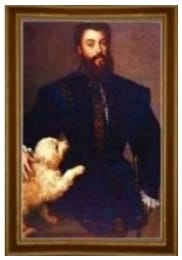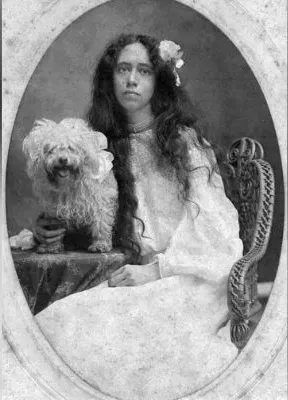Ancient Origins: The Mediterranean Connection
Before the Havanese became Cuba’s darling, their story begins in the warm waters of the Mediterranean Sea over 2,000 years ago. The Havanese belongs to the ancient Bichon family—a group of small, white, silky-coated dogs that were the cherished companions of nobility across the Mediterranean islands and coastal regions.
These early ancestors went by various names: the Little Silk Dog, Caniche, or Melita, and they can be traced back as far as the first century B.C. What’s fascinating is that your modern Havanese shares this noble lineage with several breeds you might recognize—the Maltese from the island of Malta, the Bichon Frise from the Canary Islands, and the rarer Bolognese and Löwchen that graced Italian palaces.
The Great Atlantic Journey
How did these Mediterranean dogs end up in the Caribbean? That’s where the story gets interesting, and honestly, a bit mysterious. Since accurate records from those seafaring days are scarce, historians have pieced together some compelling theories.
One possibility is that Italian merchants brought Bichon-type dogs to Spanish settlements in Argentina, where they were bred with the now-extinct South American Toy Poodle. These offspring then made their way to Cuba, carrying the genetic foundation that would become the Havanese.
Another theory suggests Spanish sea merchants picked up these dogs during their regular stops at the Canary Islands or Malta, then brought them to the West Indies as they established trade routes to the New World.
What we do know for sure is that clever sea merchants quickly realized these charming little dogs made perfect gifts for the wives and daughters of wealthy sugar plantation owners. What better way to win favour with the families whose goods they wanted to purchase for European markets?
Cuba’s Little Aristocrat: Early Days in the New World
Once established in Cuba, the Havanese developed their own unique identity. Known locally as “Habaneros,” these dogs became symbols of wealth and status in colonial Cuban society. But their story in Cuba wasn’t always smooth sailing.
At the turn of the 20th century, Cuba’s economy shifted dramatically. The end of slavery meant sugar plantations had to rely on mechanization, which hurt profits significantly. Many plantation families sold their holdings and moved to Europe, taking their prized Havanese with them.
Initially, European society was fascinated by these exotic Cuban dogs. But as with many trends, the novelty wore off, and many Havanese found themselves abandoned on European streets. Remarkably, their intelligence and natural performing ability led many to find new careers in traveling circuses across Europe.
However, the devastating world wars of the early 1900s meant that by the 1940s, no Havanese were known to have survived in Europe. The breed’s future once again rested entirely with the dogs that had remained in their Cuban homeland.
Back in Cuba, the Havanese continued to live their privileged existence well into the 20th century. These charming little dogs remained the exclusive companions of Cuba’s wealthy elite. Sugar plantation owners treasured them as family members, and they were never sold—only given as precious gifts between aristocratic friends.
Picture this: elegant Cuban ladies riding through Havana in horse-drawn carriages with their beloved Havanese perched on their laps. These dogs knew only the finest life, pampered and cherished in grand plantation houses.
When Everything Changed
The story takes a dramatic turn in 1959. When Cuba’s political landscape shifted dramatically, the privileged world of the Havanese crumbled overnight. Many wealthy families fled the country, but heartbreakingly, most had to leave their beloved dogs behind.
Here’s where the story gets truly remarkable: the entire breed’s survival hung by the thinnest of threads. Only a handful of Cuban families managed to escape with their Havanese. We’re talking about the Perez and Fantasio families who made it to Florida, and Senor Barba who fled to Costa Rica. That’s it—just three families carrying the genetic future of an entire breed.
The Great Rescue Mission
In the 1970s, an American dog lover named Dorothy Goodale became the breed’s unlikely hero. She recognized what was at stake and began working with these Cuban exile families to rebuild the Havanese population. Starting with just six dogs—one adult female, four of her puppies, and one male from a different line—she launched what would become the modern Havanese breeding program in America.
Think about that for a moment: nearly every Havanese you see today can trace their lineage back to those precious few dogs that made the journey from Cuba decades ago.
What Makes Them Special
The Havanese didn’t survive this incredible journey by accident. These dogs are remarkably adaptable and resilient. Unlike many toy breeds, they’re surprisingly sturdy and athletic. They were known to herd chickens and other farm animals back in Cuba, and many are natural swimmers if introduced to water early.
But perhaps most importantly, they have that magical temperament that makes them irresistible companions. Happy, intelligent, and utterly devoted to their families, they seem to bounce back from adversity with their tails wagging.
Your Havanese Today
When you look at your Havanese, you’re seeing a living piece of history. These dogs carry the genetic legacy of Cuban aristocracy and the determination of families who refused to let a breed disappear. Every playful bounce, every loving gaze, connects back to those sugar plantations of old Havana and the courage of people who saved them from extinction.
From nearly vanishing completely to becoming beloved family pets around the world, the Havanese has truly earned the title of “comeback kid” of the dog world. Today, thousands of these delightful dogs bring joy to families everywhere—a testament to their remarkable journey and the people who refused to let them fade into history.
Fun Facts About Havanese History
- They were originally called “Little Silk Dogs” because of their flowing coats
- No one outside Cuba’s elite society could own a Havanese—they were that exclusive
- They once performed as circus dogs in Europe when their wealthy owners could no longer care for them
- The breed standard used to rebuild the population was actually from 1963, helping maintain their authentic characteristics
- Modern Havanese dogs still retain many of the traits that made them perfect companions for Cuban aristocrats: they’re social, adaptable, and devoted to their families
Your Havanese isn’t just a pet—they’re a survivor, a piece of living history, and proof that love and determination can save something precious from disappearing forever.






